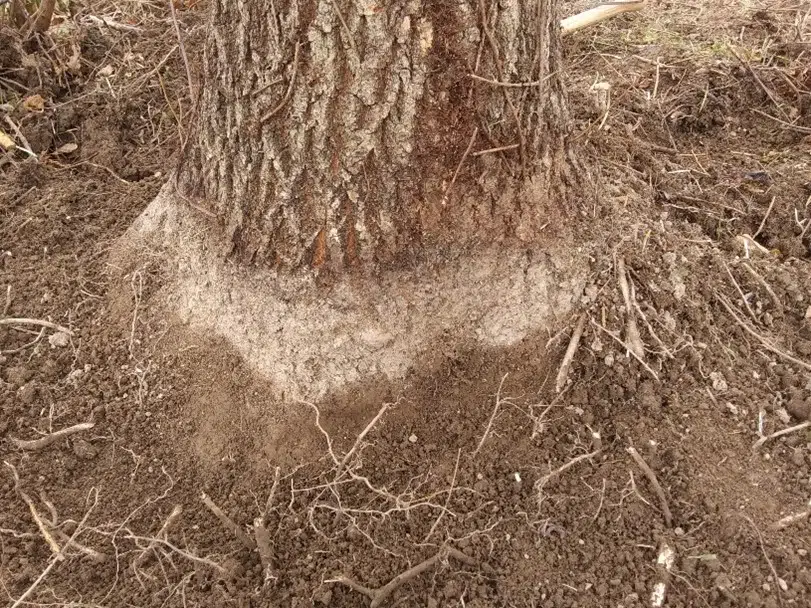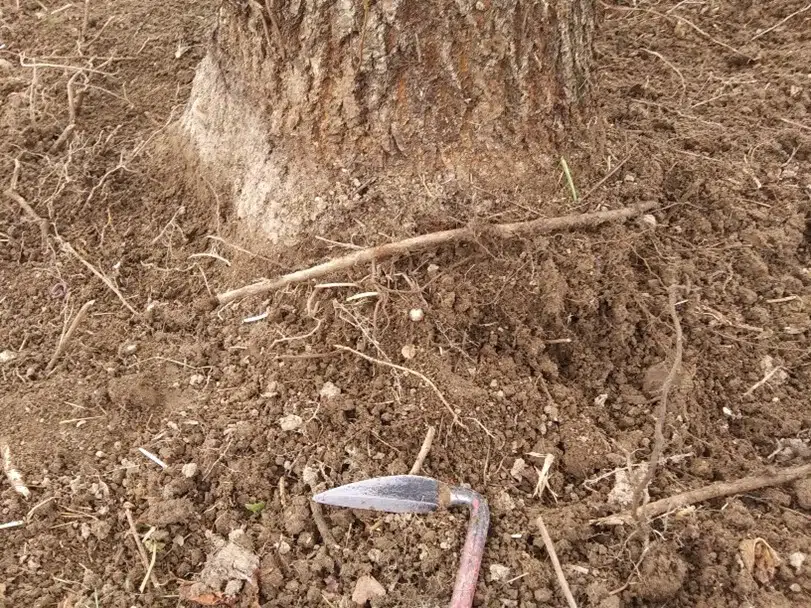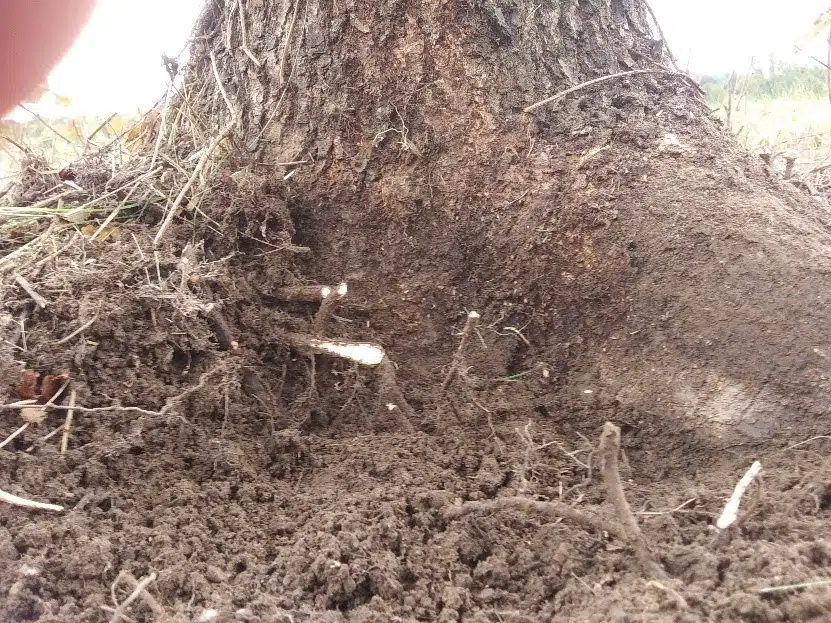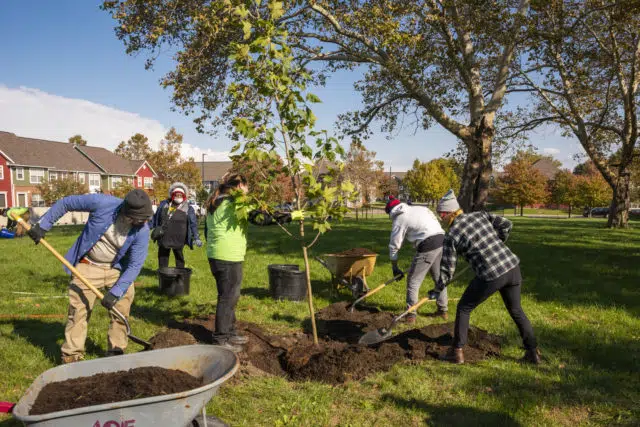
By Gary Weinheimer, Collections Maintenance Supervisor
When planting a tree, proper planting depth to keep the trunk flare exposed and inspection of the roots to remove any stem girdling roots is key to the survival of a young tree. A stem girdling root is a root that does not grow out and away from a tree’s base but instead wraps partially or fully around the tree’s base. They are harmful in that they cause a disruption of the flow of nutrients to the crown above that can lead to dieback of the limbs and a general weakening of the tree (see pictures B & D below).
Even with proper practices at planting time, removing any circling roots around the trunk flare does not ensure girdling roots will not develop in the years to come.
The trunk flare (sometimes referred to as the root flare) is the area of a tree near the base where the trunk begins to widen, or flare, as it transitions to the underground root system (see Picture A). When we mulch around our trees to aid in moisture retention and weed suppression, we are also adding organic matter around the base of the tree. After years of mulching and leaves falling from the trees, more and more organic matter builds up. When it decomposes, this debris turns into a nutrient-rich soil that can potentially accumulate to cover the trunk flare. This creates a perfect environment for adventitious roots to sprout. An adventitious root such as this or a root from poison ivy or any other nearby plant growing over the trunk flare can result in a stem girdling root.


Here at HF&G, when planting a tree, we create a dyke, a ring of soil, around the base of the tree to trap water in the root ball or container area for effective watering in the fields (see Picture E). This is great for keeping the water where we want it but potentially problematic as it holds the decomposing organic matter around the base of the tree which can eventually bury the trunk flare.
To help counter this buildup of soil we have adopted a new step in our post-planting care of trees. In the tree’s formative care years, we physically remove the dyke and everything that has accumulated in the ring (see Picture C). Simply put, we take a garden hoe and remove the dyke. Typically, we do this at three to five years post-planting. By this time, the tree should be established enough to continue growing without the aid of the dyke. This removal coincides with the first structural pruning cycle in the tree’s life.



In the commercial landscape world, there is a damaging practice we term “volcano mulching”. With volcano mulching, an excessive amount of mulch is piled up high around the trunk of the tree. This creates the same effect mentioned above; that is, the accumulation of organic matter that ultimately generates the ideal environment for girdling roots. Some say this practice occurs because landscapers can charge more for time and material; I like to think a lack of education is the cause.
To give a tree its best chance of survival, post-planting care can be just as important as steps taken at planting time. Proper mulching practices and removal of excess organic material around the trunk flare are key to a healthy tree.
Remember if you do not see a trunk flare you have a problem waiting to happen.













